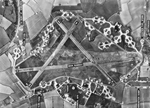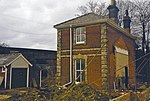Lineage Wood & Railway Track, Long Melford
Long MelfordSites of Special Scientific Interest in Suffolk

Lineage Wood & Railway Track, Long Melford is a 78.7-hectare (194-acre) biological Site of Special Scientific Interest north-east of Long Melford in Suffolk. Lineage Wood has neutral grassland rides with diverse flora, especially orchids such as the greater butterfly, fly orchid, common spotted and bee orchid. 22 species of butterfly have been recorded. The disused railway line also has floristically rich grassland, but the soil is more alkaline. Lineage Wood is private land with no public access, but the St Edmund Way footpath runs along the disused railway line.
Excerpt from the Wikipedia article Lineage Wood & Railway Track, Long Melford (License: CC BY-SA 3.0, Authors, Images).Lineage Wood & Railway Track, Long Melford
St Edmund Way, Babergh
Geographical coordinates (GPS) Address Nearby Places Show on map
Geographical coordinates (GPS)
| Latitude | Longitude |
|---|---|
| N 52.1 ° | E 0.76 ° |
Address
St Edmund Way (Long Melford-Bury St Edmunds branch line)
St Edmund Way
CO10 0BH Babergh
England, United Kingdom
Open on Google Maps










